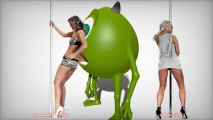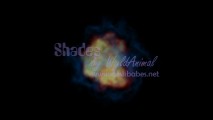Discussions for Scenes for Version 1.2.X Fullscreen Mode here
Todo sobre iStripper
December 31, 2014, 5054 respuestas


@Buzzy: Thanks. I'll watch out for that! :)
@Beast: Looking cool too! I'll get around to those later :)
As a, 'not yet' programmer, I've been playing all day with a shader I got from ShaderToy last night. I used Beast's instructions to change 'Uniform' terms so they'll work with VG. Then I was thrown a curve ball and there was an extra function that kept on throwing up errors, 'iMouse'. After a ton of trial and error, I simply commented out everything with that function and it worked! Woohoo! I think it was designed to be an interactive, mouse controlled function? Anyway, it's a bit of a silly, fun shader that I called, 'Pervy Alien'. I still need to figure out how to get rid of jerkiness with some of the clips. @TheEmu has been a star, trying to help with this on the Flame shader. Thanks buddy, I'll figure it out mañana :)
Anyway, it's on GoogleDrive if you want it:
https://drive.google.com/file/d/0B0q3PJ8LyTh8SWgxank5Q3dmNkE/view?usp=sharing
The shader rotates back and forth, ogling the girls ;)
Edit: Is there any way to control which side the girls enter from in Fullscreen? For me they ALWAYS enter from the left now...
















